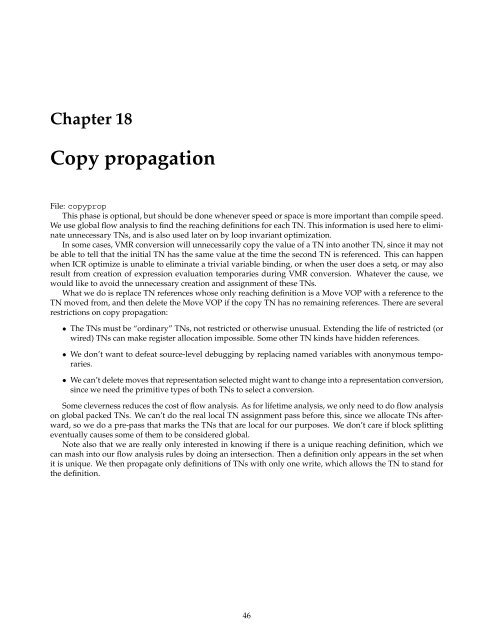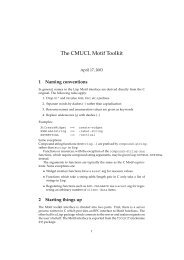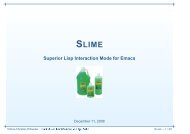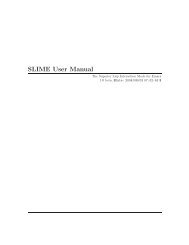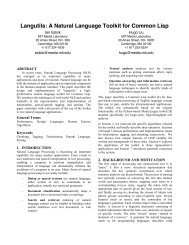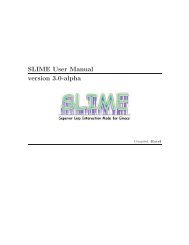Design of CMU Common Lisp.pdf - Common Lisp.net
Design of CMU Common Lisp.pdf - Common Lisp.net
Design of CMU Common Lisp.pdf - Common Lisp.net
Create successful ePaper yourself
Turn your PDF publications into a flip-book with our unique Google optimized e-Paper software.
Chapter 18<br />
Copy propagation<br />
File: copyprop<br />
This phase is optional, but should be done whenever speed or space is more important than compile speed.<br />
We use global flow analysis to find the reaching definitions for each TN. This information is used here to eliminate<br />
unnecessary TNs, and is also used later on by loop invariant optimization.<br />
In some cases, VMR conversion will unnecessarily copy the value <strong>of</strong> a TN into another TN, since it may not<br />
be able to tell that the initial TN has the same value at the time the second TN is referenced. This can happen<br />
when ICR optimize is unable to eliminate a trivial variable binding, or when the user does a setq, or may also<br />
result from creation <strong>of</strong> expression evaluation temporaries during VMR conversion. Whatever the cause, we<br />
would like to avoid the unnecessary creation and assignment <strong>of</strong> these TNs.<br />
What we do is replace TN references whose only reaching definition is a Move VOP with a reference to the<br />
TN moved from, and then delete the Move VOP if the copy TN has no remaining references. There are several<br />
restrictions on copy propagation:<br />
• The TNs must be “ordinary” TNs, not restricted or otherwise unusual. Extending the life <strong>of</strong> restricted (or<br />
wired) TNs can make register allocation impossible. Some other TN kinds have hidden references.<br />
• We don’t want to defeat source-level debugging by replacing named variables with anonymous temporaries.<br />
• We can’t delete moves that representation selected might want to change into a representation conversion,<br />
since we need the primitive types <strong>of</strong> both TNs to select a conversion.<br />
Some cleverness reduces the cost <strong>of</strong> flow analysis. As for lifetime analysis, we only need to do flow analysis<br />
on global packed TNs. We can’t do the real local TN assignment pass before this, since we allocate TNs afterward,<br />
so we do a pre-pass that marks the TNs that are local for our purposes. We don’t care if block splitting<br />
eventually causes some <strong>of</strong> them to be considered global.<br />
Note also that we are really only interested in knowing if there is a unique reaching definition, which we<br />
can mash into our flow analysis rules by doing an intersection. Then a definition only appears in the set when<br />
it is unique. We then propagate only definitions <strong>of</strong> TNs with only one write, which allows the TN to stand for<br />
the definition.<br />
46


